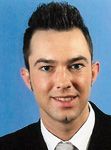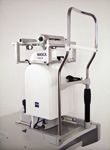Article
DSA expands diagnostic spectrum
Dynamic stimulation aberrometry enables objective measurement of the range of accommodation after the implantation of accommodating IOL such as an accommodating lens, allowing physicians to determine optimal wavefront correction and individualize treatment.

Key Points

"DSA enables binocular dynamic accommodation stimulation during regular wavefront measurements," said Dr. Elling, who is affiliated with Ruhr University Eye Clinic, Bochum, Germany.
Dr. Elling, Burkhard Dick, MD, and colleagues conducted a study of 30 healthy phakic eyes and 16 healthy pseudophakic eyes-including eyes in which accommodating IOLs had been implanted-to determine the accuracy, reproducibility, and intra- and inter-observer reliability of DSA.
The researchers analyzed the dynamic course of changes in lower-order aberrations (sphere and astigmatism) and higher-order aberrations.

To analyze intra-observer reliability, one examiner measured 20 healthy phakic eyes and eight healthy pseudophakic eyes five times each. To evaluate inter-observer reliability, 10 healthy phakic eyes and eight pseudophakic eyes were measured five times each. Results were compared.
Reproducibility and accuracy also were measured.
Charts, animation
After data are entered, Dr. Elling explained, the software produces charts wherein time in seconds is displayed on the horizontal axis and refractive power in diopters is shown on the vertical axis.
"After the analysis, we also can create an animation file of the changes in the wavefront during the accommodation process," he said.
Results from the study indicated that "DSA allows objective and observer-independent measurements of changes in accommodation in phakic and pseudophakic eyes," Dr. Elling said. "This method provides a high degree of accuracy in all measurements, and so we recommend use of this technology in addition to the common psychophysical examinations to attain objective information on the range of accommodation, sphere, cylinder, and pupil size."
Newsletter
Don’t miss out—get Ophthalmology Times updates on the latest clinical advancements and expert interviews, straight to your inbox.




